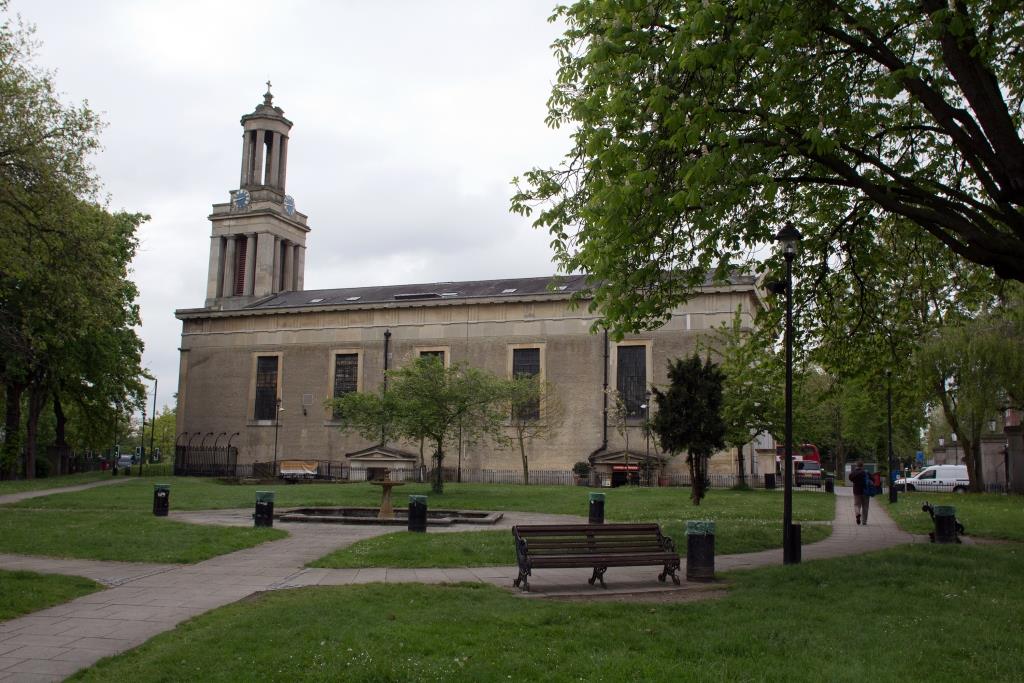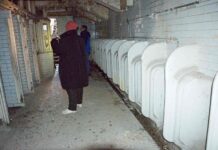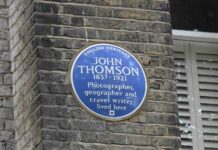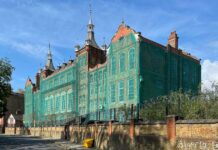Written by Hayley Dean as part of Brix & Mortar: a celebration of Brixton’s unique architecture

Located in the heart of Brixton nestled between Effra Road and Brixton Hill stands one of our areas most iconic landmarks revered for its cultural, historical and architectural importance. St Matthew’s Church is a grade 2 listed building and is ranked in the top six thousand buildings of architectural note in England. This building has had a chequered history over the years but has played an important role in the community since 1824.
St Matthew’s was built out of necessity as a response to the surge in population in the area in the early 19th century. The only public building to be designed by architect C. F. Porden, St Matthew’s was considered a revolutionary landmark for locals to come and worship. What makes this Greek revival style building so interesting from an architectural perspective is its placement of the steeple and clock tower at the opposite end to the main portico – a design considered very controversial in Victorian times.
It is not just for architectural reasons that St Matthew’s is beloved by Brixtonites – it also has long standing historical and religious ties to the area. This place of worship was the first Anglican Church in Brixton and helped encourage local residents maintain their faith in a time when radical changes from abroad were seeping their way in to local culture.
Occasional repairs and maintenance over the years has helped maintain the building we see today, however St Matthew’s has encountered its fair share of issues in the past. The church has been faced with closure several times, most notably in the mid-1970’s but was saved due to the building’s architectural merit and importance. Such is the history of St Matthew’s Church that during this time former Prime Minister John Major was married to his wife now Dame Norma Major in 1970.
Whilst only subtle modifications that have been made to the exterior of St Matthew’s Church, there have been significant changes going on under the roof. Over the years and particularly through the 1970’s and 80’s the use of the building varied immensely. During this period improvements were undertaken and it was converted into a multi-purpose building where the congregation would share the space with youth and community facilities, offices, meeting rooms and exhibition areas.
The gravest threat to St Matthews came when the church was in dire need of repair early in the 90’s. Happily in 1992 the charity The Brix stepped in to provide stability for the historic building and reinstate St Matthews Church as a viable community space. After significant repairs and refurbishments St Matthews was reopened to the public again in November 1994.
Caroline Clark, who has been on the board of Trustees for The Brix for the past 20 years is passionate about the conservation of one of Brixton’s most important landmark buildings and affectionately describes St Matthews as a “Glorious folly”. Caroline has been the Chair of Trustees at The Brix for the past 8 years and speaks fondly of the church:
I know I am biased, but St Matthews is a statement building idyllically positioned in the middle Brixton between Rush Common and the Peace Garden, and like other historical buildings such as the Ritzy and the Tate, it shows that Brixton is an important place with architectural significance.
Today The Brix shares its 6-storey space with not only the St Matthews congregation who continue to worship on the site, but also with a college (School of Communications), a community hall, a suite of offices and the Gremio de Brixton tapas bar and restaurant in the Crypt and remains one of Brixton’s most loved icons.



